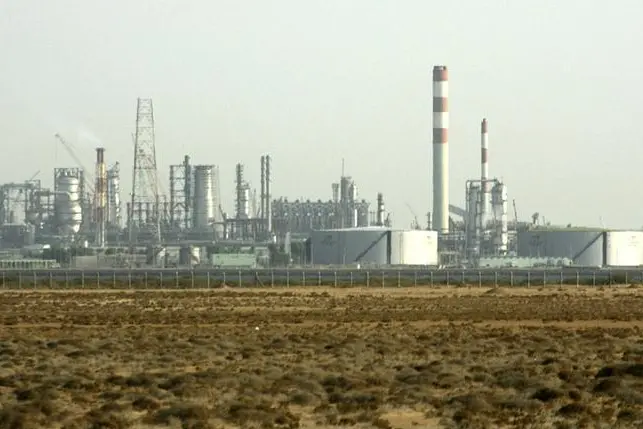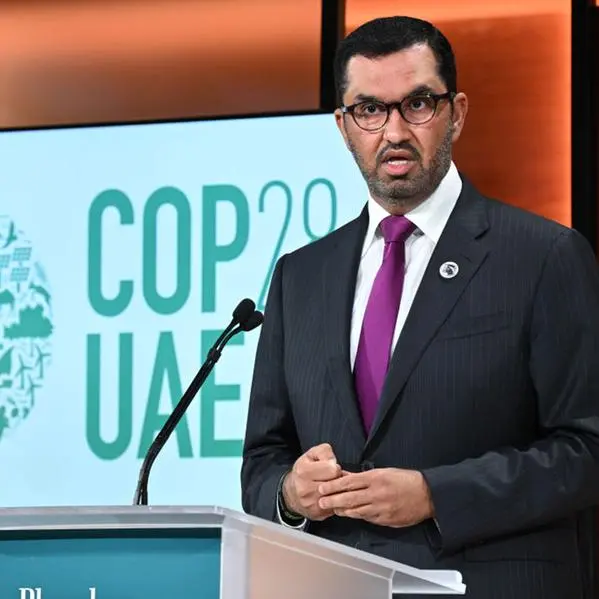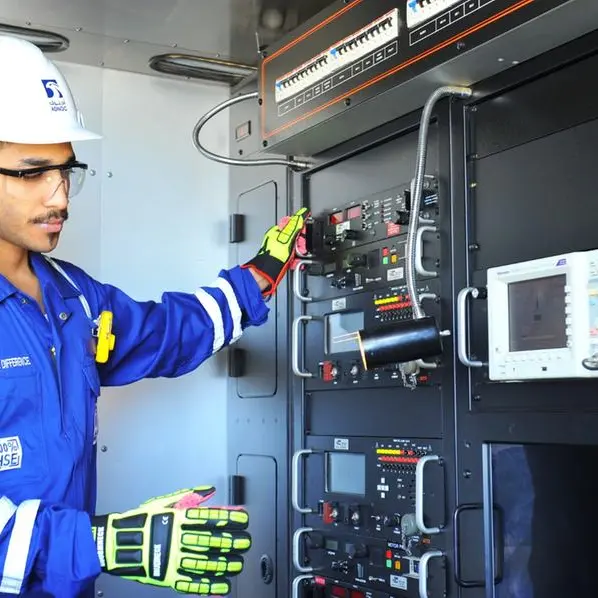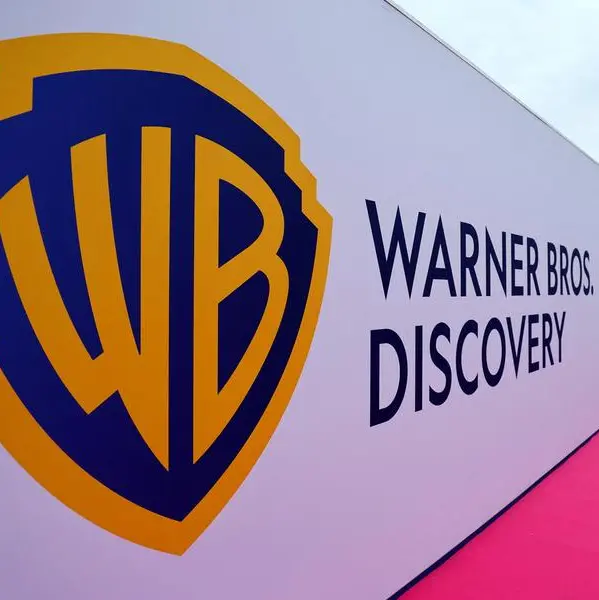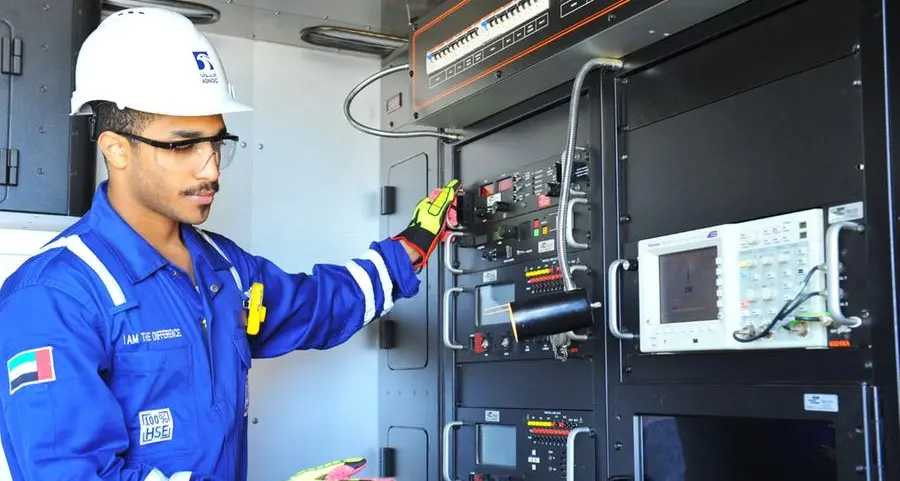PHOTO
A sustained decline in product prices, depressed margins and stiffer foreign competition have proved troublesome for Saudi Arabia’s petrochemicals sector, but the long-term demand outlook is bullish and the kingdom’s inclusion in emerging market equity benchmarks have helped support stock prices.
Saudi Basic Industries Corp (SABIC), the world’s number four petrochemical producer, dominates Saudi’s petrochemicals’ industry, which includes around 14 listed companies. The company has just become part of state-owned oil giant Saudi Aramco after it bought a 70 percent stake previously held by the Public Investment Fund in a $69 billion deal announced late on Wednesday.
SABIC, its subsidiaries and affiliates account for around 90 percent of the sector, and it was these associated companies that were largely blamed for SABIC’s 12.4 percent annual decline in fourth-quarter profit.
In a research note, Al Rajhi Capital said weak results at the likes of Yanbu National Petrochemical Co (Yansab), Saudi Kayan and Saudi Arabian Fertilizers Co (SAFCO) were the main cause of the bigger-than-expected profit slump, as well as rising production costs. Nevertheless, SABIC’s full-year performance was markedly better, with its 2018 profit of 21.54 billion riyals, up 16.9 percent year-on-year.
SABIC’s weak fourth quarter reflects a renewed drop in petrochemical prices in late 2018; 20 of the 25 petrochemical products covered by Al Jazira Capital saw prices fall month-on-month in December.
Saudi producers’ key products include polyethylene, polypropylene and polystyrene, which all suffered year-on-year price declines in December, the most recently-available data.
Polyethylene was down 34.6 percent, according to Al Jazira Capital, while polystyrene fell 14.8 percent and polypropylene eased 4.8 percent.
“The trade dispute between China and the U.S. is having a huge impact on the global petrochemicals industry,” said Iyad Ghulam, vice-president and senior equity research analyst at Riyadh’s NCB Capital.
“Prices shown on the likes of Reuters and Platts were much higher than they were in reality – the market was extremely weak in Q4, and buyers were hesitant and would only buy if they were given a further discount of 20-30 percent versus the prices shown on the screen.”
In response to weakening demand from China, SABIC has sought to expand sales to other regions such as Africa, while domestic rival Advanced Petrochemical Co refocused on the likes of Turkey.
“There is weaker-than-expected demand from China. But SABIC has one of the lowest costs of production, so if anyone can sell it will be SABIC because it can compete strongly on cost,” said Pritish Devassy, head of equity research at Riyadh’s Al Rajhi Capital. “Prices will probably be weaker this year than we were anticipating.”
Petrochemical prices closely track those of oil, with the prices of naphtha, propane and butane all falling by more than half since early 2014, mirroring the precipitous decline in crude prices.
The U.S. Energy Information Administration (EIA) forecasts Brent crude will average $63 in 2019 and $62 in 2020, down from an average of $71 in 2018. Such a slump is foreseen despite rising consumption - global oil demand in 2019 will increase by 1.4 million barrels per day in 2019, the International Energy Agency forecasts.
The United States’ shale boom has led to an expansion of its petrochemical sector, particularly the production of polyethylene. This excess supply has led polyethylene prices to remain flat despite a near-25 percent increase in Brent crude prices this year, indicating the correlation between oil and certain petrochemical prices is weakening, said Ghulam.
“There’s expanding supply and weakening demand for petrochemicals,” he said. “If China and the U.S. find a way to resolve their differences, it’ll be hugely beneficial to Saudi’s petrochemicals sector.”
Talha Nazar, head of research at Riyadh’s Al Jazira Capital, forecasts a 2-3 percent annual decline in SABIC’s revenues this year, also predicting the petrochemicals prices will begin to recover from the second quarter onwards.
“For a company of that size which depends greatly on global demand, a slight drop in revenues is quite normal,” he said.
Saudi producers have long benefitted from subsidised feedstocks – the oil- and gas-derived raw ingredients from which products are made. With petrochemicals prices largely tracking oil prices, Saudi producers’ margins expand as oil prices increase – product prices rise, but their materials costs remain unchanged.
SABIC receives ethane at a fixed price of $1.75 and buys propane at a 20 percent discount from Aramco; most Saudi producers’ use a mixture of these two feedstocks.
“In general, the spread between product and feedstock prices widened greatly starting 2014 until 2018, but is now starting to normalise,” said Iyad Ghulam.
Saudi Arabia’s government has announced plans to steadily reduce feedstock subsidies so that petrochemical companies will pay market rates in around 2020 or 2021, as per the Fiscal Balance Program (FBP).
“The plan is to completely remove subsidies, but we believe it’s likely to be a longer, more gradual process,” said Ghulam.
“Major producers like SABIC can offset higher feedstock prices by reducing their costs – SABIC’s EBITDA margin has remained steady for the past 10 years despite feedstock price changes – but it’s very difficult for smaller players to do the same,” he added.
The oil price slump in late 2018 – crude plunged 37.7 percent from October 5’s four-year peak – reduced feedstock prices for producers from other regions, some of whom were able to manufacture products at lower cost than their Saudi rivals, which pay a fixed, subsidised price, said Al Jazira’s Nazar.
Long term bulls?
Petrochemicals producers may be facing difficulties, but the long-term outlook is upbeat, according to a report by the IEA, which notes that demand for plastics has nearly doubled this century and predicts the use of plastic and other petrochemical products could still expand markedly further; developed countries use 20 times as much plastic as the likes of India and Indonesia on a per capita basis, and 10 times as much fertiliser.
The IEA predicts petrochemicals will account for nearly half the growth in demand for oil to 2050, more than the likes of aviation and shipping.
“The combination of a growing global economy, rising population, and technological development will translate into an increasing demand for petrochemical products,” the IEA report states. “The difficulty in finding alternatives is another factor underpinning the robust overall demand growth for petrochemical products.”
The main products of SABIC and its various subsidiaries include fertiliser, metals and plastics. SABIC’s production is focused toward basic chemical products, while more complex products provide higher margins.
“SABIC has a lot of plans to increase production, but expansions are primarily dependent on product demand and product-feedstock spreads,” said Al Rajhi’s Devassy.
Saudi’s producers should focus on improving efficiency and producing value-added products, said NCB Capital’s Ghulam.
“The likes of polyethylene are becoming commoditised and production worldwide is huge, so Saudi companies need to find new niches,” he said.
Chemical attraction
SABIC, along with other Saudi heavyweight stocks, will be included in the FTSE Russell and MSCI emerging markets indexes in March and June respectively, which has helped support sector stock prices. In the first four weeks of January, foreign investors were net buyers of more than $160 million of SABIC shares, Al Rajhi estimates.
As of late January, SABIC was trading at a price-to-earnings ratio of 18.9 versus a sector average of 13.5, according to Al Rajhi, which has a neutral rating on the stock.
Al Jazira believes most Saudi petrochemical stocks are fairly priced, apart from Tasnee and Saudi Kayan, which appear undervalued.
“As foreign flows come in, prices could rise – the heavyweights have already seen inflows, but the smaller names haven’t yet,” said Nazar.
NCB Capital is more guarded, perceiving the sector as slightly overpriced.
“We’re cautious in terms of valuations, because of the uncertainties over feedstock subsidies and the China-U.S. dispute,” said Ghulam.
“Also, weak emerging market currencies have reduced many customers’ buying power because petrochemical products are priced in dollars, which is another factor diminishing demand.”
The Aramco factor
Saudi Aramco's move to acquire a majorty stake in SABIC is consistent with broader trends in the oil sector.
“Against a backdrop of slower gasoline demand growth, robust growth prospects for chemical products, and attractive margins, oil companies are further strengthening their links with petrochemical markets,” the IEA wrote.
“New, direct crude oil-to-chemicals process routes may also come into play, offering alternatives to traditional refining/petrochemical operations, although the technology remains challenging for now,” it added.
Ahead of the takeover, Aramco had teamed up with SABIC to build a 400,000 barrels-per-day crude oil-to-chemicals project that is fives time larger than the only other facility of its kind worldwide and which will be operational in the mid-2020s.
“The future of oil is petrochemicals, so from a strategic viewpoint this deal makes sense, and there should be benefits for both companies,” added Ghulam. “In the short term, it’s difficult to say how the transaction will affect SABIC, which will continue its global expansion – it’s looking at opportunities in Africa, Asia and North America.”
(Reporting by Matt Smith, Editing by Michael Fahy)
(michael.fahy@refinitiv.com)
Our Standards: The Thomson Reuters Trust Principles
Disclaimer: This article is provided for informational purposes only. The content does not provide tax, legal or investment advice or opinion regarding the suitability, value or profitability of any particular security, portfolio or investment strategy. Read our full disclaimer policy here.
© ZAWYA 2019
